The Royal Navy will host an online Industry Engagement event on 14 May 2025, seeking industry input for its Strike Net programme, an initiative aimed at advancing communications, data sharing, and uncrewed systems integration in maritime operations.
Launched in 2022, Strike Net was created to “deliver the common data standards and architecture to enable rapid and effective integration of uncrewed assets, e.g. UAVs, into the maritime deployed domain”, ensuring seamless interoperability in multi-national force operations.
In 2024, the programme’s scope expanded “to include the communications and software architecture to enable effective integration and delivery of effect across crewed and uncrewed platforms in a hybrid multi-national environment.”
As a result, Strike Net now sits at the heart of multiple future military capabilities, spanning several operational domains. Designed specifically for deployed operations in contested and congested environments, Strike Net focuses on three key capability areas:
- “Communications bearers and management” – enhancing connectivity for naval and joint operations.
- “Peer-to-peer data sharing to enable third-party exploitation” – ensuring seamless intelligence distribution across allied forces.
- “Uncrewed vehicle integration” – incorporating autonomous maritime and aerial platforms into naval networks.
The MOD’s Develop Directorate will use the 14 May event to engage with defence industry partners, technology providers, and innovators, providing a platform to discuss potential solutions and collaboration opportunities.





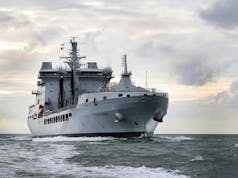
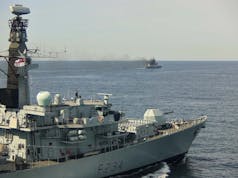
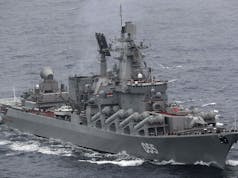
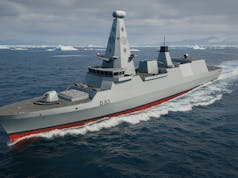

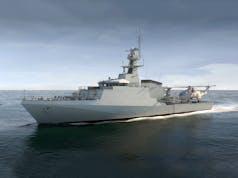

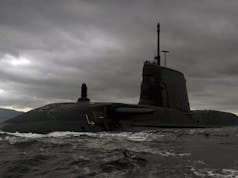

I would have thought that by now after all the trials that have preceded this conference over the last 10 years, the RN has some idea of what it wants and how to get there!
One obvious question, is how can the RN emulate the tactics and successes achieved by Ukraine’s uncrewed surface vessels (USVs) against Russia. But expand it for operations in rivers, the littorals and open ocean. Looking at the size differences between the USVs Ukraine has used in its Black Sea Operations, which are based on the recreational See-Doo, Magura and the new larger Sea Baby. Shows that as Ukraine’s confidence in these systems has grown, the vessels are growing in size and encompassing new capabilities. The Sea Doo versions and Magura have been used for one way suicide missions. Where they contain a large explosive and attack shipping. Which with the newer Magura V, has developed to include a remote weapons system armed with a 50 cal MG or a R73 infrared homing (air to air) missile. Where depending on who you believe, it may have achieved the first shoot down of a helicopter by a USV. The Sea Baby is the newest and larger iteration. Again it can carry the same load out as the smaller Magura V, but now can contain a 850kg explosive, compared to the Magura’s 108kg. It has also been seen carrying a rack of 122mm unguided rockets, though hitting any designated target with those in a swell must be interesting. Unlike the previous USVs, the Sea Baby can now be recovered back to port, as it has nearly a 1000km range.
Ukraine’s use of USVs does show how capable they now are, but also some of their limitations. Where once out of line of sight, they must rely on satellite communications. Which can be disrupted, or in the case of Starlink, turned off. Therefore, there needs to be a sovereign communications capability, which negates issues with 3rd parties.
The other question that needs trialling and quantifying, is the practicalities of trying to launch x-number of USVs from a mid-hull mission bay, compared to say a well deck. I have no doubt that the mission bays on the T26 and T31 will be very useful. But they will not compare with the ease of use when deploying or recovering USVs by using a well deck. Perhaps for a mothership design, that should be taken into account?
Ukriane’s use of USVs against Russian warships, has shown they are pretty hard to spot and to hit, as they ride so low in the water. But also that Russian ship’s invariably don’t have the necessary weapons to take them out. As most of the videos and images show, Russians using rail mounted MGs. As unlike RN ships they don’t seem to have 20/30mm autocannons to do the job. I’ve yet to see them using the AK630 CIWS for this job! You can guarantee that any RN ship operating where it is likely to come under attack from USVs, will have the sides covered in GPMGs and 50 cals. It does seem like the perfect requirement for the DS30 with pod mounted Martlet!
It is all down to
– effectiveness
– cost
– reloads
The martlet solution is, on paper, great but spending on changing up to 40mm gives range and more importantly the ability to take out a huge number of targets with a great depth of reloads.
I would tend to agree. I still feel Martlet offers an effective solution, which should be quicker to fit. Though a ship will need the right type of laser to support the guidance requirements.
There is a small problem with the Bofors 40, as it’s not a direct drop and play system like Phalanx. Ships like the River class that use the Terma-Scanter mechanically scanned radars as their primary radar, are not suitable for gun laying and target tracking. As some of the Scanter’s are only 2D and 3D. They use instead an electro-optical turret to remotely control the targeting of the weapon such as the 30mm turret. However, for a CIWS role, you really need a radar to give you the all-weather capability, which is not interfered with by rain, fog, snow, dust etc.
Rather than completely replacing the Terma radar you could add a dedicated tracking radar, such as the Leonardo NA-30S MK2, which is used with their 76mm Strales to guide their Dart guided rounds. These type of radars rely on continuous wave (CW) transmissions to measure the target’s doppler shirt, which for the traditional types on non-electronically scanned array radars, means they can usually do only one mode at any time, i.e. it won’t be able to do a long distance pulsed search and a short range CW mode simultaneously. Another example is that Phalanx being a platform agnostic and to an extent an independent system, uses two separate radars, one for searching and one for tracking. Both are the traditional mechanically scanned radars.
On ships like the T23, 26, 31, 45 and QE class, their primary radars (Artisan, Sampson and NS100) are electronically scanned arrays. Which means they can can run two modes either simultaneously or in near real time. Thereby allowing them to do search and tracking for gun laying and tracking.
It would be really handy, if BAe (Bofors) included an option to fit an EO turret and a mechanically scanning (X or Ku/Ka band) AESA panel to the Bofor’s 40 turret (preferably the MK110 57mm as well). Which would give the turret a form of independence. The AESA radar would as per the Phalanx, allow the system to have both a search and track function. But should also reduce the amount of resource time the primary radar has to dedicate for fired round and the assigned target tracking. Enabling to spend more time doing long range searches and tracking.
Leonardo NA-30S MK2 is not CW, it is pulse. It might have an attached CW illuminator, The 80’s version had for the Aspide SAM.
I have earned and received $19,683 by working online from home. In previous month i have this income just by doing work for 2 hours maximum a day using my laptop. This job is just awesome and regular earning from this just great. Now everybody can now get this job and start making real money online just by follow instructions on this website…
——–>> 𝐖𝐰𝐰.𝐖𝐨𝐫𝐤𝐬𝐩𝐫𝐨𝐟𝐢𝐭𝟏.𝐨𝐧𝐥𝐢𝐧𝐞/
Are you sure it’s pulsed. As a pulse transmission won’t give you a velocity rate of change, whereas a CW does as its looking for the targets doppler shift. Mind you a pure Doppler Radar that transmit only CW won’t be able to determine the target’s range, as it doesn’t time stamp the transmission. An option to get round this issue, is by using a ramped (modulated) CW waveform such as a frequency modified continuous wave (FMCW). This type of waveform sort of merges a pulsed and CW together. Which allows it to determine range to a target, as well as the targets doppler shift to work out its velocity. Some people call this pulsed CW, but that is incorrect.
I would go to far as to say the RN also needs to adopt a guided round option such as DART.
Plopping a 57mm or even better a 76mm rapid with dart on the front of the Type 45s in the place of the 4.5mm would be a very effective upgrade.
also getting the guided round option developed for the 57mm would be very useful as well as sticking 57mms every place they can go on the fleet. So that’s Carriers, amphibious vessels..see if it could be fitted into the T26…then change out all the 30mm cannons with 40mm bofors MK4.
Hi Jon, I definitely feel that guided rounds are the way forward. They are a force multiplier for the ship, as they are significantly more reliable at hitting a moving target, over a legacy type of air burst proximity round. Perhaps just as significantly the price per round is significantly cheaper than a missile and therefore the ship’s weapon’s magazine can carry a shed load of them if necessary as well as standard dumb ammunition.
About a two years ago the USN were pushing heavily on their requirement for two 57mm guided rounds. One called ALAMO, which could be used against fixed targets as well fairly slow moving ones. Whilst the MAD_FIRES was being developed to counter high speed targets including anti-ship missiles. However, it has gone very quiet on that front, as DARPA and Raytheon who were developing them haven’t released any information on them recently. Another 57mm option is BAe’s ORKA, which lost out in the competition with the USN to MAD-FIRES. This could be a sovereign development, but the RN would have to fund its development.
There is another option from BAe, which is the hypervelocity projectile (HVP). Again this is a guided sabot round like MAD-FIRES and ORKA, but is currently scaled for the naval 5″, NATO standard 155mm and 203mm (which isn’t really used anymore!). It original was the round developed by BAe for the USN railgun project. The railgun got shelved, but the HVP saw use in further trials running up to 2022, when it was shelved as part of the USN’s cuts. However, following the operations against the Houthis, the USN have restarted the program. This was on the back of the Arleigh Burkes using the 5″ Mk45 to take out both surface and airborne drones with fuzed airburst proximity shells. The HVP projectile is the same size when used in all three gun systems, only the sabot cage dimensions change. In a way its a shame that the RN have binned the idea of using the 4.5″ Mk8, as that has a higher rate of fire of the 5″ Mk45 due to the ammunition being one piece instead of two. It currently doesn’t have the software to program the shells for the anti-air mode. But I do wonder if the HVP sabot could be scaled down to fit the 4.5″, whilst keeping the projectile the same size? Perhaps that would be a cheaper option for the T45s, than replacing the weapon system with either the 57mm Mk110 or the 5″ Mk45?
As much as I like the Leonardo Strales 76mm and the DART guided ammo combination, which has now been proven by the Italian Navy in combat against the Houthis. Having a 4th weapon (main gun) system is financially not viable.
I am making a good salary from home $4580-$5240/week , which is amazing under a year ago I was jobless in a horrible economy. I thank God every day I was blessed with these instructions and now its my duty to pay it forward and share it with Everyone, Here is I started_______ Www.Earn54.COM
I do worry about the time it is taking us to implement – what is fast becoming – established technologies. Although I think Adm Parkin and the Navy Develop team have done an incredible job with the Pat Blackett and MASTT development. We need money fast, quicker procurement and a fundamental change in how we are willing to operate. It is eerily similar to the challenges faced under the Fisher reforms… Coal works, we have established infrastructure and all these happy stokers, why would we change. Just make more of what we already have… I am a very capable ship driver and understand sails but don’t understand why we need these engine things… how would big guns fit into current doctrine… aeroplanes and submarines have no place in modern conflict.
There are such issues with reforming an established hierarchical organization, that the organization itself become resistant. The step from an analogue/industrial Fleet to a digital Fleet needs to happen! Even if it means breaking the conventions of our still Victorian navy establishment to do it.